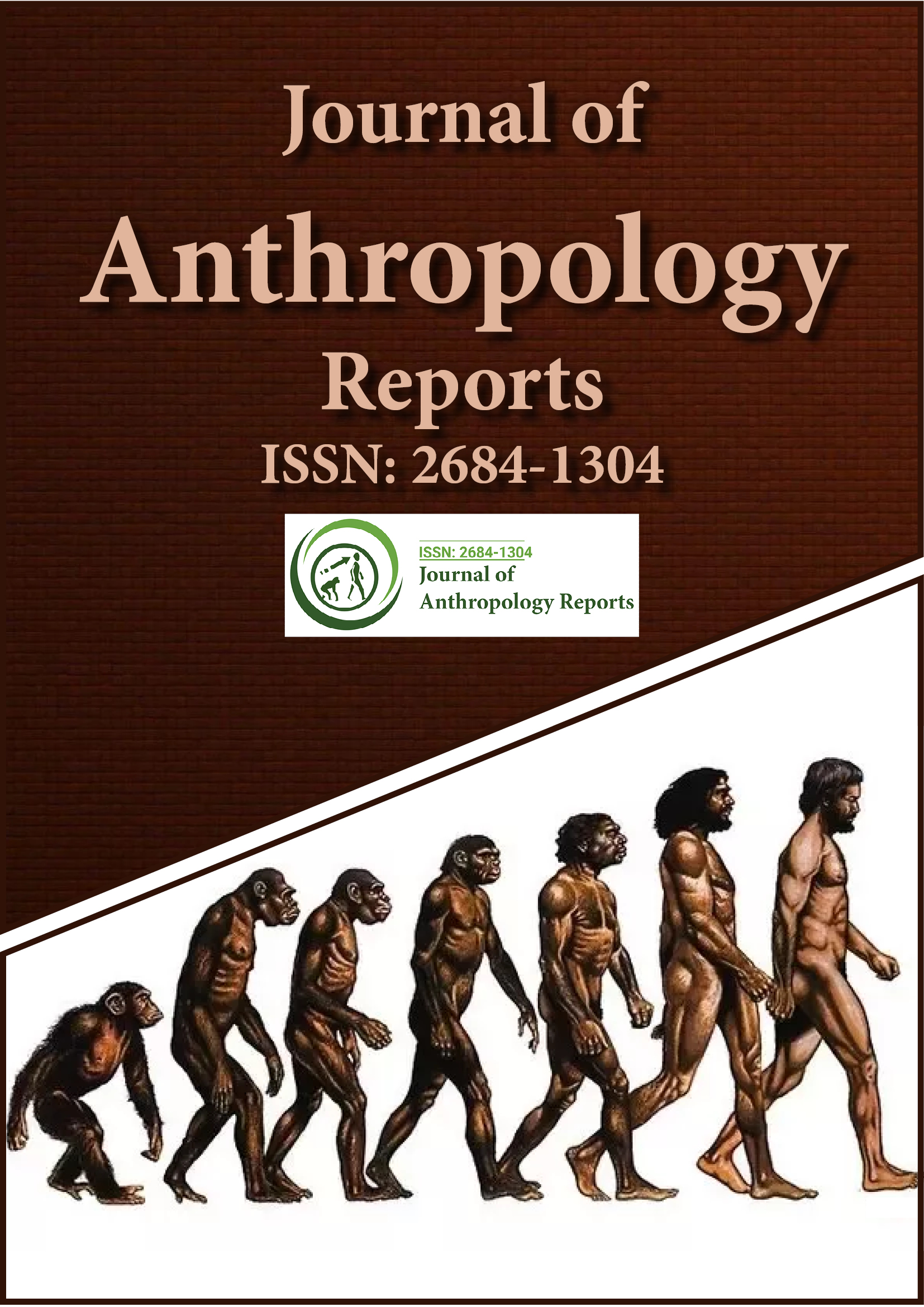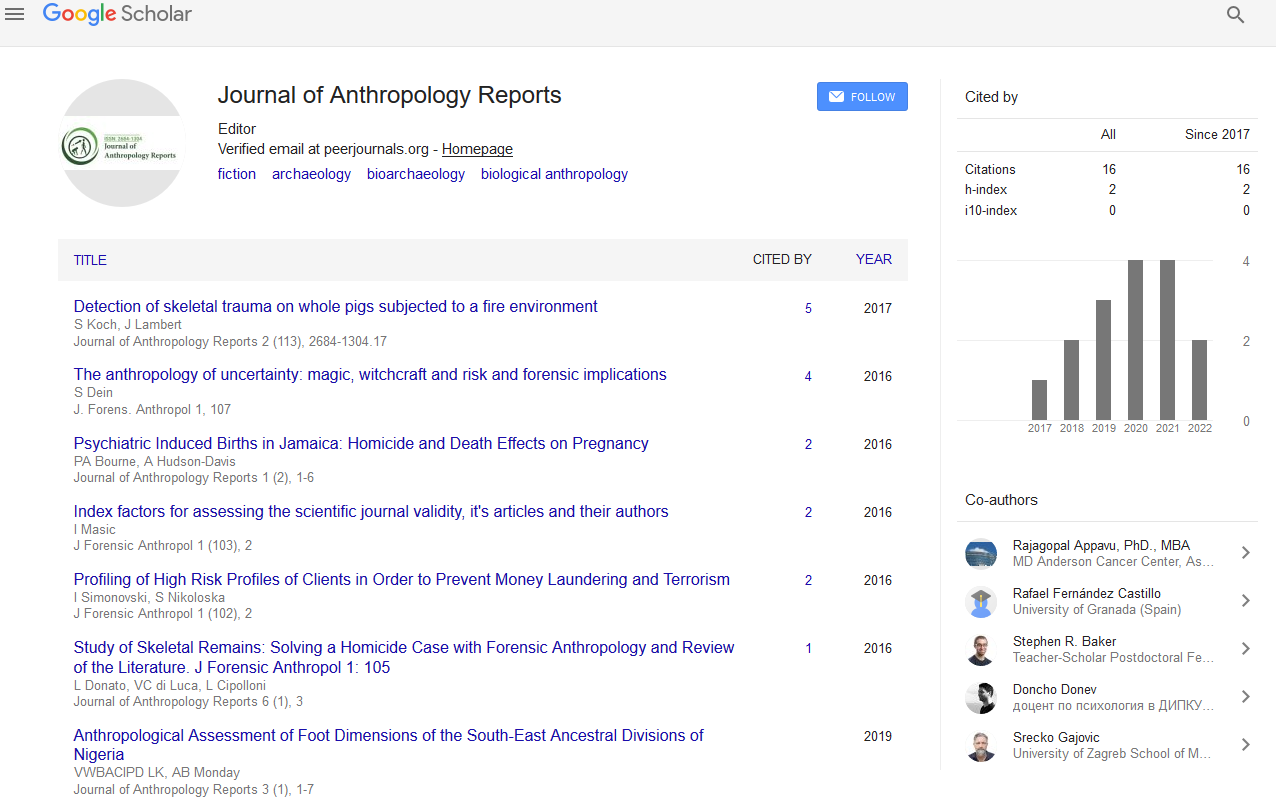Indexed In
- RefSeek
- Hamdard University
- EBSCO A-Z
Useful Links
Share This Page
Journal Flyer

Open Access Journals
- Agri and Aquaculture
- Biochemistry
- Bioinformatics & Systems Biology
- Business & Management
- Chemistry
- Clinical Sciences
- Engineering
- Food & Nutrition
- General Science
- Genetics & Molecular Biology
- Immunology & Microbiology
- Medical Sciences
- Neuroscience & Psychology
- Nursing & Health Care
- Pharmaceutical Sciences
Perspective - (2023) Volume 6, Issue 2
Linguistic Anthropology: The Connection between Linguistic Diversity and Other Forms
Abhigyan K. Singh*Received: 20-Jun-2023, Manuscript No. JFA-23-21911; Editor assigned: 22-Jun-2023, Pre QC No. JFA-23-21911 (PQ); Reviewed: 06-Jul-2023, QC No. JFA-23-21911 (QC); Revised: 13-Jul-2023, Manuscript No. JFA-23-21911 (R); Published: 21-Jul-2023, DOI: 10.35248/2684-1304.23.6.160
Description
Linguistic Anthropology explores the complicated relationships between linguistic diversity and a lot of human society. Culture, identity, and communication, influencing social structures and worldviews. This interdisciplinary field uncovers how language and other forms of expression interact, shedding light on the profound interplay between language and human life. Phonetic anthropologists contend that human creation of talk and message, made conceivable by the special human limit with respect to language, is a central component through which individuals make culture and public activity. The analysis of audio or video recordings of "socially occurring" discourse-that is, talk and text that would appear in a community regardless of whether the anthropologist was present-is the method by which contemporary scholars in the field investigate how this creation is accomplished. This method is preferred because the results derived from investigator-imposed elicitation, such as "interviewing," may be shaped in unpredictable ways by differences in how different communities understand the meaning of speech acts like questioning.
The question of whether cultural and structural differences in the use of various languages contribute to differences in how human communities comprehend the world is central to linguistic anthropology. Neighbourhood societies of language might lean toward specific types of articulation and stay away from others. For instance, while the English language has a large vocabulary of so-called absolute directional (words like "north" and "southwest"), the majority of speakers rarely use these terms for orientation, preferring vocabulary that is relative to a specific location (like "downhill" or "left").
It is possible for "language cultures" to transcend languages. As a result, Native American Puebloans, who speak languages from four distinct families, do not permit everyday speech to invade religious contexts and avoid using multiple languages in the same sentence, even when speakers are multilingual. In contrast, their Spanish-speaking neighbours value colloquial forms of worship and frequently switch between Spanish and English, as evidenced by their folk masses written in everyday language. How "cultural models," or local understandings of the world, are encoded in speech and text is important research. Local conceptions of how language functions are examined by "language ideologies" students. A huge language philosophy related with the development of present day country states builds specific approaches to talking as "standard dialects"; In contrast to other languages or dialects, which are marginalized and stigmatized once a standard is established, it is regarded as prestigious and appropriate.
Linguistic anthropologists investigate the connection between other types of human difference and linguistic diversity. Franz Boas argued that "race," "language," and "culture" are distinct entities. For example, networks of Dwarf trackers in East Africa are naturally and socially particular from adjoining cultivators, yet the two gatherings share similar Bantu dialects. However, as referenced over, the Puebloan people groups of the U.S.
Southwest offer a typical social collection, however they communicate in dialects that have a place with four distinct and irrelevant families.
Historical linguists divided the approximately 6,000 languages spoken worldwide in the 20th century into genealogical families, or languages that share a common ancestor.
The African Bantu languages, which belong to the Niger-Congo language family and include hundreds of languages and cover a huge area, are one example of a very large subgroup. Some, like Keresan in the Southwest of the United States of America, which has two closely related varieties, are very small. Research on how to account for this difference is important. Major technological innovations like the use of cultivation, which allow the community of innovators and its language to expand at the expense of neighbouring groups, may result in families that are both geographically large and numerically large. A different possibility is that, regardless of technology, some kinds of physical environments, like the Eurasian steppes, encourage language spread and differentiation, while others, like mountainous zones, encourage the proliferation of small linguistic communities.
The subject of why one language extends and broadens to the detriment of its neighbours was especially intense toward the start of the 21st hundred years, when a couple of world dialects (quite English, Spanish, and Chinese) were quickly getting new speakers, while half of the world's realized dialects confronted termination. Applications of linguistic anthropology look for solutions to language extinction and discrimination based on language, which are frequently motivated by the popular beliefs about the relative prestige and the utility of various languages.
Citation: Singh AK (2023) Linguistic Anthropology: The Connection between Linguistic Diversity and Other Forms. J Anthropol Rep. 6:160.
Copyright: © 2023 Singh AK. This is an open-access article distributed under the terms of the Creative Commons Attribution License, which permits unrestricted use, distribution, and reproduction in any medium, provided the original author and source are credited.

